Reflecting on Game Industry Trends: Insights from Q3 2024
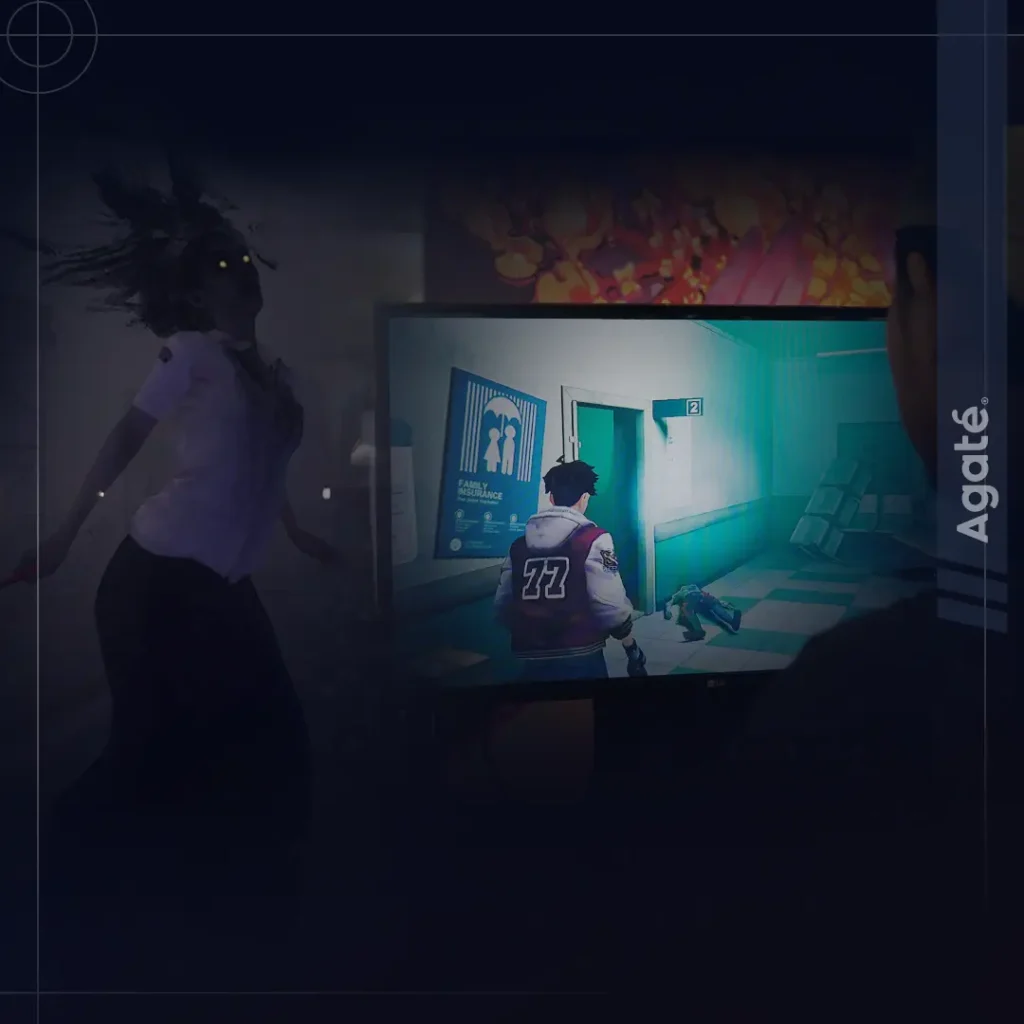
More than three-quarters of 2024 has flown by. As we dive into the final quarter of the year, let’s unpack the trends that have shaped the gaming landscape and explore how they will influence the future of the industry. Industry Landscape The Dominance of Mobile Games As of Q3, a report from Konvoy estimated number of gamers worldwide is 3.4 billion, with over half of them coming from the Asia Pacific region. According to Newzoo, mobile gaming has emerged as the dominant force in the gaming industry, generating a substantial USD92.6 billion in revenue this year. This impressive figure accounts for a significant 49% of the total USD187.7 billion gaming revenue across all platforms. The surge in mobile gaming can be attributed to the increasing affordability of smartphones and the widespread availability of high-speed internet, which have democratized gaming access for millions of people worldwide. As smartphone technology continues to advance, devices have become more affordable, making them accessible to a wider range of consumers. Budget-friendly smartphones now offer powerful processors and high-quality displays, enabling users to enjoy a seamless gaming experience. Although there’s resurgence trend of portable consoles, such as Steam Deck and various Android-based handhelds, these devices have yet to overshadow the dominance of mobile gaming. Why do mobile games continue to reign supreme? Accessibility Almost everyone has a smartphone, making mobile gaming accessible anytime, anywhere. Genre diversity From casual to complex, mobile games offer a wide range of genres. Microtransactions The microtransaction model has proven highly effective in generating significant revenue for mobile game developers. However, portable consoles have their own advantages: Performance Portable consoles typically offer better performance than smartphones, enabling them to run games with higher graphics and more detail. Gaming experience The physical controls provided by portable consoles offer a more immersive gaming experience, especially for certain genres like RPGs and action games. Ecosystem Portable consoles like the Steam Deck provide access to a vast library of PC games, giving players a wider range of titles to choose from. The competition between the two platforms is intensifying, driving innovation and the development of better games to meet the evolving needs of gamers. Game Industry Funding According to the Konvoy report, investments in blockchain and AI-powered gaming have surged compared to the previous year. While blockchain technology and AI applications in gaming are still in their early stages, they hold immense potential to revolutionize the industry. Blockchain can revolutionize digital ownership, enabling players to truly own in-game assets and trade them on decentralized marketplaces. AI, on the other hand, can enhance game development, generate realistic graphics, and create more immersive and personalized gaming experiences. M&A activity in the gaming industry continued its upward trend in Q3 2024, reaching a disclosed deal value of USD2.5 billion. This marks the fourth consecutive quarter of growth. The trend is expected to persist in the coming quarters, driven by factors like lower interest rates and a recovering public gaming market. In Indonesia, the gaming industry is experiencing a significant boost from government support. The recent presidential decree aimed at fostering the growth of the local gaming industry has further fueled enthusiasm and optimism within the sector. Unlocking the Potential of Indonesian Gaming Industry: A New Horror Experience by Local Developers Indonesia’s rich tapestry of folklore, filled with tales of spirits and supernatural beings, has inspired the creation of intriguing horror games. One such example is DreadHaunt, a single-player and co-op horror game developed by Agate and Digital Happiness. DreadHaunt‘s single-player mode delves into a chilling narrative, exploring the origins of the supernatural events that haunt the game world. Meanwhile, the co-op mode emphasizes teamwork and strategic thinking as players work together to complete objectives and evade the terrifying ghostly entities that lurk in the shadows. With the implementation of a season pass system, DreadHaunt has the potential to evolve into a long-lasting horror experience. This system opens the door to exciting possibilities, such as the addition of new story content, maps, characters, and game modes. Additionally, collaborations with other popular horror franchises could further enrich the game and attract a wider audience. Agate is also developing another horror game, Akarmaut: Rootmare, a terrifying world filled with human-plant hybrid creatures. This survival horror game aims to tap into the global appetite for horror and showcase the potential of Indonesian developers to create unique and frightening gaming experiences. Let’s Build Indonesia’s Game Industry Together! Contact us at enterprise@agate.id to explore opportunities that align with your mission for the industry.
Crafting High-Quality Games: Quality Assurance Role in Game Development

Today’s players are not like ever before. To meet their high expectations and provide an immersive experience, maintaining exceptional quality in games is both a challenge and a necessity. This is where the pivotal role of Quality Assurance (QA) comes into play, especially in the gaming industry. Get to Know Nasya Meet Nasya, Quality Assurance of Agate’s Full-cycle Game Development team. Her journey in the game industry began as a college game tester, and today, she is instrumental in ensuring that games achieve the highest standards of quality. With a background in English Literature, Nasya exemplifies that a successful career in QA doesn’t require a traditional path. Her passion for gaming and eagerness to learn demonstrate that anyone can thrive in this field, regardless of their educational background. A Day in the Life of a QA in Game Development For Nasya, every day as a Quality Assurance is all about precision and collaboration. Her day kicks off with setting up a detailed timeline that maps out the testing tasks for each sprint, ensuring every feature is tested on time. Once the plan is in place, it’s time to dive into the action—running diverse scenarios to catch potential bugs and verify that fixes hold up. When an issue arises, Nasya works closely with the development team, documenting the bug’s details and digging into its root cause before collaborating on a solution. After testing wraps up, Nasya compiles the findings into a thorough report, ensuring the whole team stays in the loop on game quality and performance, pushing the project closer to perfection. Navigating Challenges Game testing presents numerous challenges, from technical issues to device compatibility and more. One notable experience for Nasya occurred during the Memories project when she encountered a login issue affecting certain devices. Nasya meticulously traced the affected devices and uncovered a pattern: the issue only arose on devices running OS 12 or higher. “I discovered that the problem was specific to devices with OS 12, while those on OS 11 or lower had no issues. Since Memories was an older game, it wasn’t compatible with the latest OS at the time.”Upon identifying the root cause, Nasya promptly reported the issue to the development team. Given its urgency and the influx of user reports, the fix was implemented quickly, ensuring smooth login for players with OS 12 and above. This experience underscores the adaptability and problem-solving prowess required in QA roles at Agate. Embarking on a QA Career in Gaming Industry: Insights from Nasya Master the Basics of QA Familiarize yourself with core concepts like test cases and bug reports, and get hands-on experience with QA tools. Essential tools include bug tracking systems such as Jira, Trello, and Notion, which help track issues and report bugs. Additionally, test case management tools like Qase.io and Jira’s AIO are crucial for organizing test cases. For QA professionals, mastering bug documentation and test case management is vital. Understand Agile Testing Agile testing is a cornerstone of modern game development. It allows for continuous testing alongside development, enabling quicker bug identification and quality maintenance. Methodologies like smoke testing and regression testing are also crucial for validating the stability of new builds and ensuring previously resolved issues don’t resurface. Problem-Solvers at Heart Successful QA professionals possess keen problem-solving skills, a sharp eye for detail, and the ability to think like a player. This perspective allows them to create scenarios that mimic player behavior, uncovering potential issues in key game areas. Moreover, they analyze root causes and provide valuable feedback to the development team. Take Ownership A sense of ownership over the game is essential. This responsibility drives QA professionals to deliver high-quality results and fosters skills like attention to detail, creativity, and problem-solving. By understanding the significance of their role, QA specialists approach their work with greater care. Shaping The Future of QA As game development and technology continue to evolve, the importance of QA will only grow. Professionals in this field must adapt to rapid technological advancements and learn to test new innovations, such as cloud gaming and AI. This evolution may introduce new testing methods, necessitating that QA remains current with industry trends. Moreover, the demand for automated testing will likely rise to manage the increasing complexity of games, though manual testing will remain indispensable. Ultimately, QA will continue to develop, striving to meet the challenges of emerging gaming technologies while consistently delivering high-quality games. Ready to embark on your journey as a QA in game development? Discover your next opportunity in the game industry at https://agate.id/career Vacancy List All DepartmentsTechnologyQualityProductionDesign and WritingArt All DivisionsGamificationFull Development CycleArt Service All ContractsTemporary Search Position Department Division Contract Type Technical Artist Art Gamification Contract Type : Temporary Details 3D Artist Gamification Art Gamification Contract Type : Temporary Details 3D Artist Art Art Service Contract Type : Temporary Details Game Producer Production Gamification Contract Type : Temporary Details Game Designer Gamification Design and Writing Gamification Contract Type : Temporary Details Load More
Story from IGDX 2024
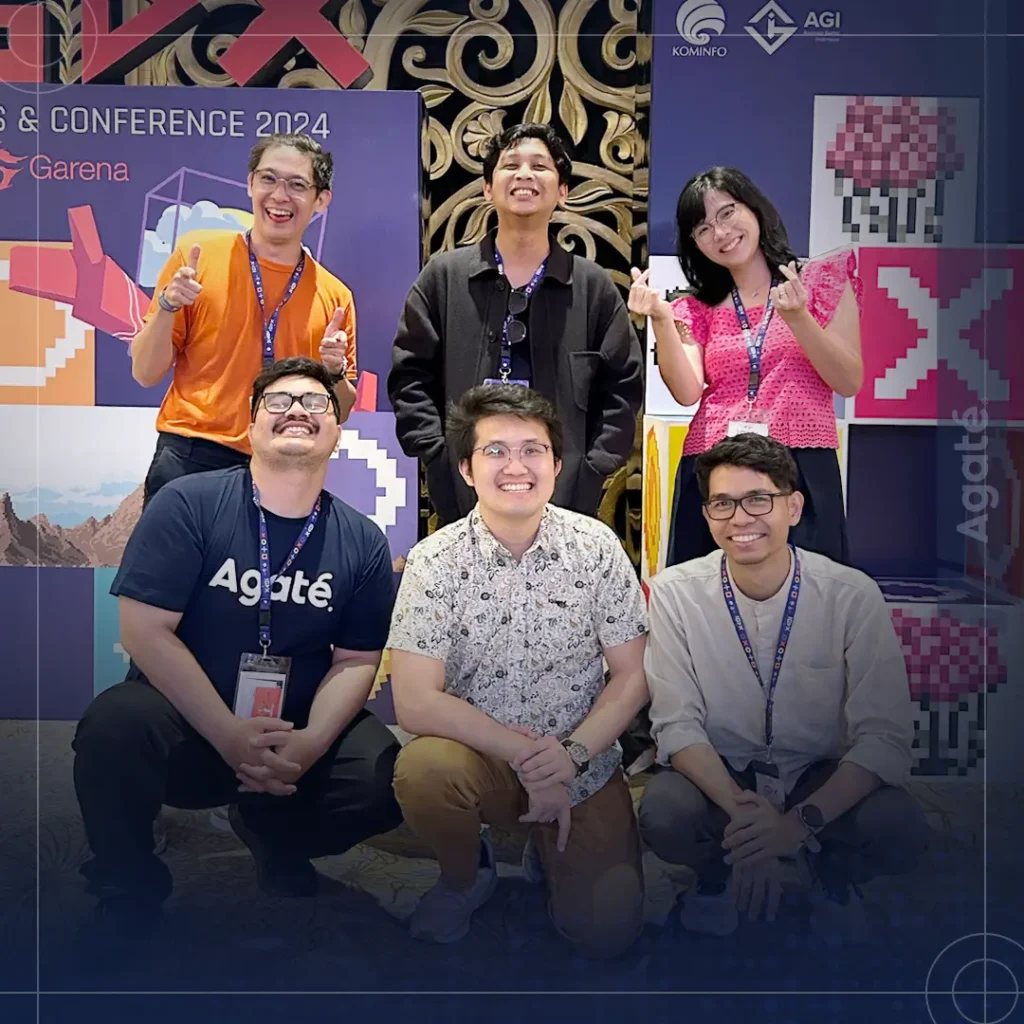
Agate had an exciting experience at Indonesia Game Developer Exchange (IGDX) 2024, an annual event organized by the Ministry of Communication and Informatics and the Indonesian Game Association (AGI). This event brought together a vibrant community of local game studios, developers, and industry experts, creating a unique opportunity to exchange knowledge, engage in business matchmaking, and witness the latest developments from local giants. Networking Night: Mixer and Mingle with Fellow Studios The night before the event, Agate hosted a Mixer session, providing a relaxed environment for industry experts to mingle and share ideas. It was a wonderful opportunity to strengthen connections and foster a sense of community among fellow studios, paving the way for future collaborations and partnerships. Sharing Our Stories: CEO Speaking Session and Podcast with The Lazy Monday Our Co-Founder and CEO, Shieny Aprilia, participated in a panel discussion titled Looking Back – Stories from the Biggest Successes from Indonesia. Alongside representatives from MassHive Media and Own Games, we shared some of the most significant milestones and success stories within Indonesia’s gaming industry. This discussion offered insights into the challenges and triumphs that have shaped our journey and inspired others in the community. During IGDX, Restya Winda Astari, CEO of Agate Academy, also had a fruitful discussion with The Lazy Monday. This conversation focused on our ongoing initiatives to shape the next generation of talent in the gaming industry, highlighting the importance of education, mentorship, and opportunities for young developers to thrive in this rapidly evolving field. Engaged with Journalists The Media Group Interview Session with our CEO was an excellent opportunity to engage in meaningful conversations with fellow journalists. This interaction allowed us to share Agate’s vision and commitment to the future of gaming in Indonesia, fostering a greater understanding of our role in the industry. Committed to the Future of Gaming Inspired by this event, we see a promising future for Indonesia’s gaming scene. Agate is dedicated to taking part in building this ever-evolving landscape, collaborating with fellow developers, and continuing to innovate within the industry. Together, we can create engaging experiences that resonate with players both locally and globally. Ready to bring your vision to life? Agate is home to exceptional talent in game development, and we are eager to help you take your game project to the next level. Don’t hesitate to reach out and let us collaborate to make your game a reality. Ready to take your IP to a new level? If you are looking for a partner to craft a captivating transmedia experience for your IP, co-development, art services, or game porting, look no further than Agate! As one of the most experienced game companies in Indonesia, Agate offers a team of skilled writers, designers, and developers who can help you create a cohesive narrative experience across all game platforms. From concept development to execution, we’ll work with you to bring your vision to life. Don’t hesitate to get in touch with us today and learn more about how we can help you take your project to exceptional heights.
Which Celestia: Chain of Fate Character Are You?
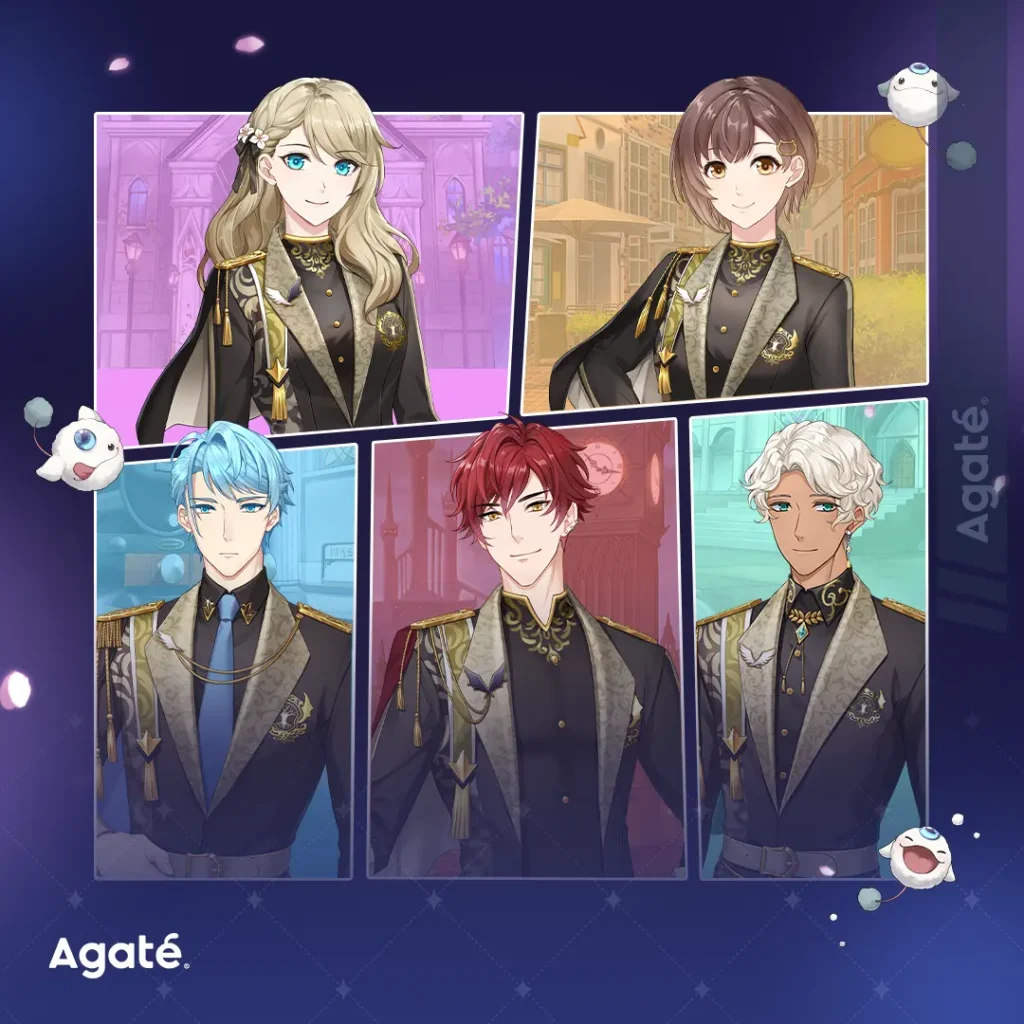
With the release of Celestia: Chain of Fate in full swing, we’re taking the excitement to the next level by inviting you to dive even deeper into the world of Celestia. Now, it’s time to find out which character truly matches your personality! Whether you’re a cool-headed strategist, a fun-loving adventurer, a nurturing caretaker, or a quiet introvert, there’s a place for you in Celestia’s magical world. Who would you be if you stepped into this realm of powerful magic, deep relationships, and hidden secrets? Take the test below to discover which Celestia: Chain of Fate character reflects your true colors! Ready to take your IP to a new level? If you are looking for a partner to craft a captivating transmedia experience for your IP, co-development, art services, or game porting, look no further than Agate! As one of the most experienced game companies in Indonesia, Agate offers a team of skilled writers, designers, and developers who can help you create a cohesive narrative experience across all game platforms. From concept development to execution, we’ll work with you to bring your vision to life. Don’t hesitate to get in touch with us today and learn more about how we can help you take your project to exceptional heights.
A Guide to Business Models in the Gaming Industry
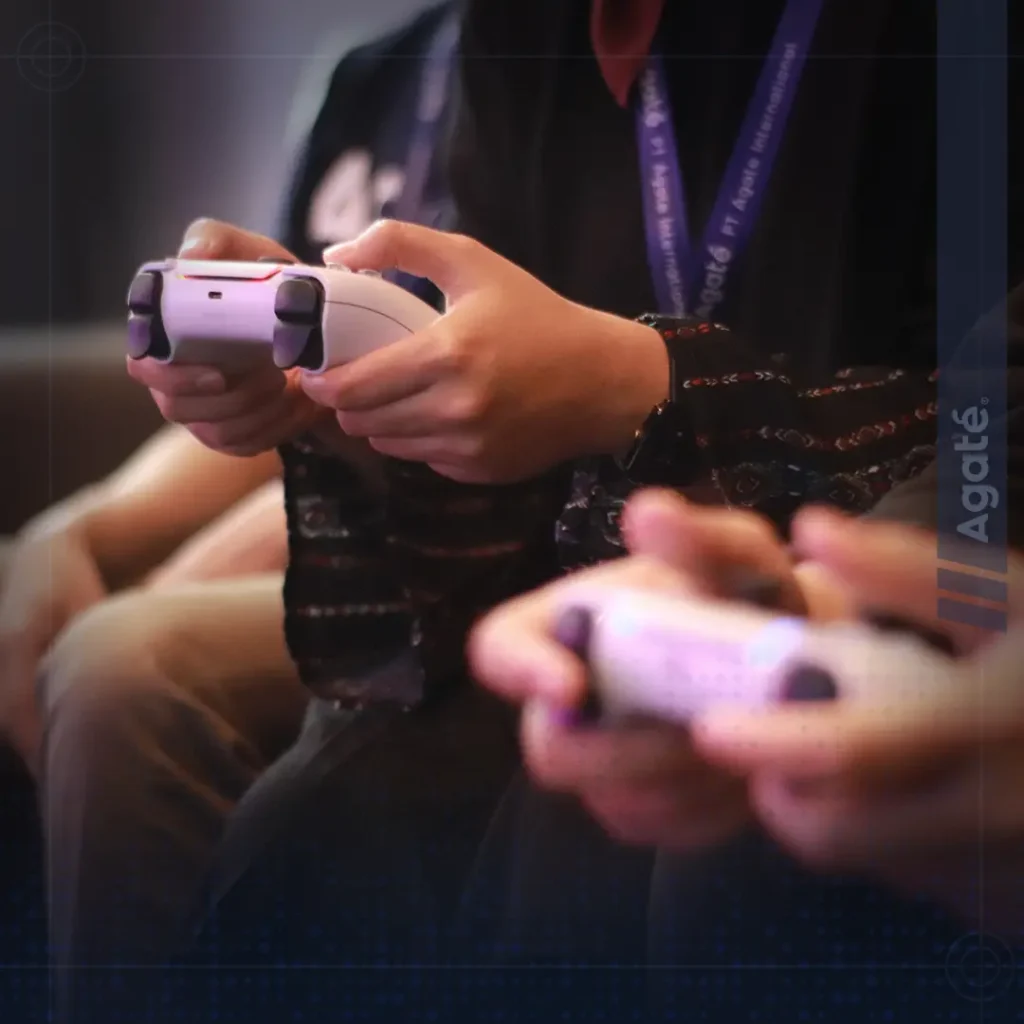
The video game industry has solidified its position as a dominant force, generating revenue that surpasses the combined earnings of the music and film industries. While creating a captivating experience remains essential, a game’s success also hinges on its financial viability. This is where a well-defined business model comes into play. This framework serves as a roadmap for generating revenue and transforming your game concept into a commercially successful product. These are various business models within the game industry: One-Time Purchase This model is ideal for delivering a complete and polished gaming experience, often featuring a rich narrative arc, intricate world design, and engaging gameplay. With a single upfront cost, players gain access to the entire game, fostering a sense of ownership and accomplishment upon completion. This approach is particularly well-suited for single-player experiences or games with a well-defined storyline. Freemium The freemium model offers the core game for free, enticing a wider audience to download and try it out. This allows players to experience the core gameplay loop and mechanics firsthand, fostering a sense of investment before they decide to spend money. However, careful consideration needs to be applied when introducing optional in-app purchases. These purchases should enhance the core experience without giving players who spend money an unfair advantage over those who don’t. This can be achieved by offering cosmetic items that alter a character’s appearance or additional content that expands the game’s world or story without impacting core mechanics or difficulty. Striking this balance is crucial for maintaining a positive player experience and fostering a loyal player base willing to invest in the game. Subscription Service The subscription model thrives with games that offer a constantly evolving experience, with ongoing development that introduces new content, features, or storylines on a regular basis. This approach is popular with massively multiplayer online (MMO) games, where players inhabit a persistent virtual world that continues to grow and change over time. Subscription fees provide a steady revenue stream that allows developers to continually invest in new content and updates, ensuring that players have a reason to return and keep playing. This model can also be effective for single-player games with episodic content, where players receive access to new story chapters or levels as part of their subscription. Strategic Advertising Non-intrusive ads, carefully integrated within the gameplay environment, can provide a steady revenue stream without sacrificing the player experience. The key lies in respecting player time and attention. This means avoiding disruptive pop-up ads or excessive video ads that interrupt the flow of gameplay. Instead, consider implementing rewarded ads that players can voluntarily choose to watch in exchange for in-game rewards, such as virtual currency, power-ups, or cosmetic items. Another approach is to partner with relevant brands to incorporate subtle product placements within the game world. For instance, a racing game could feature billboards with real-world car brands, or a sports game could include advertisements for athletic apparel companies. When done thoughtfully, these integrated ads can enhance the game’s realism and provide a more immersive experience for players while still generating revenue for the developers. In-Game Marketplace Create a virtual marketplace where players can buy and sell items using an in-game currency. This fosters a sense of community and encourages player engagement in several ways. Players can collaborate to acquire rare or powerful items, bargain and negotiate for the best deals, and showcase their unique collections or customized characters. This marketplace can also extend the game’s lifespan by providing players with new goals to pursue and new ways to interact with each other. For example, an action role-playing game (RPG) might have a marketplace where players can buy and sell weapons, armor, and crafting materials. The in-game marketplace can be a dynamic and ever-evolving system, with new items and content being added regularly to keep players engaged. The gaming industry thrives on innovation, constantly seeking new ways to engage players and generate revenue. As the world of cryptocurrency continues to evolve, so too do the business models employed within games. Play-to-Earn This model incentivizes players by rewarding them with cryptocurrencies or NFTs (non-fungible tokens) for completing tasks or emerging victorious in matches. This creates a unique economic ecosystem within the game itself. Players can earn valuable digital assets through their dedication and skill, potentially holding or trading them for real-world value. This approach fosters a deeper level of engagement, as players are not just passively consuming the game but actively contributing to its internal economy. However, it’s crucial to ensure a balanced experience where enjoyment and fair competition remain paramount. Choosing the Right Model for Your Game Choosing the optimal business model for your game requires careful consideration of several key factors. Here’s a breakdown of how these factors can influence your decision: Play-to-Earn One-time purchases offer upfront revenue, allowing you to reinvest those funds into future projects or expansions for the same game. It’s important to price the game competitively to ensure strong sales and a healthy return on investment Freemium models, on the other hand, offer more flexibility, allowing you to spread the development burden over time through in-app purchases. Player Engagement Freemium and subscription models are designed to keep players coming back for more. You need to provide a steady stream of new content, features, or challenges that entice players to return regularly and invest more time into your game. In contrast, one-time purchases are ideal for games that deliver a focused and complete narrative experience. These games provide a satisfying conclusion upon completion, leaving players with a sense of accomplishment and closure. Long-Term Revenue Subscriptions and in-game marketplaces are designed to generate a consistent stream of revenue over time. This allows developers to reinvest those funds into ongoing development efforts, ensuring a steady flow of new content, features, and updates to keep players engaged and coming back for more. This approach fosters a thriving in-game economy and a loyal player base. Crafting Your Winning Strategy with Agate Developing a sustainable business model for your game requires careful
Unleashing the Potential of Indonesian Games: Agate Game Talk

To celebrate Indonesia’s Game Day, Agate hosted a livestreaming session, Agate Game Talk, with the theme “Unleashing the Potential of Indonesian Games.” Focusing on Agate’s position as the largest game development company in Indonesia, the event aimed to increase international awareness of Indonesian-made games, particularly with the upcoming release of Celestia: Chain of Fate in September 2024. Panelists included Aditia Dwi Perdana (Co-founder and Chief Studio Officer), Novita Elisa Fahmi (Director of Product Full-cycle Game Development), and Geoffary Arka (Head of Porting). In this Agate Game Talk, we shared several key points for fellow Indonesia game developers: Local Culture, Global Appeal With a large gaming community, Indonesia has attracted the attention of many international publishers. Coupled with strong government support, the Indonesian gaming industry is thriving. Many AAA publishers are drawn to games that authentically reflect local cultures. This presents a unique opportunity for developers to create games that resonate with these publishers. Porting to Popular Platforms The primary goal of porting a game is to expand its reach by making it accessible to players on different platforms. This can significantly increase the game’s player base and revenue potential. To streamline the porting process and ensure optimal performance across various systems, developers should prioritize clean, well-structured code. This facilitates adaptability, reduces troubleshooting time, and ultimately leads to a higher-quality port. Agate’s Newest Game on Steam and Nintendo Switch Following the release of Valthirian Arc: Hero School Story 2 last year, Agate, in collaboration with PQube, will release Celestia: Chain of Fate on Steam and Nintendo Switch this September. Celestia: Chain of Fate is a standalone version of the mobile game Memories: My Story, My Choice, featuring additional content for a more immersive visual novel experience. You can wishlist the game on Steam and Nintendo Switch now. We hope this game will help solidify Indonesia’s position as a rising force in the global gaming industry. Our Hopes for Indonesia’s Game Industry The panelists concluded by sharing their hopes for the future of Indonesia’s gaming industry. As one of the most experienced gaming companies in Indonesia, Agate believes that a strong community is essential for the industry’s growth. Emerging developers should be seen not as rivals but as collaborators, sharing insights and knowledge to elevate the Indonesian gaming industry on the global stage. Let’s work harder to craft exceptional games! Do you want to turn your ideas or existing IP into a fully developed video game with proper game testing? Look no further than Agate! Don’t hesitate to get in touch with us today and learn more about how we can help you take your project to exceptional heights.
Beyond Play: How Gaming Revolutionizes Our Everyday Lives
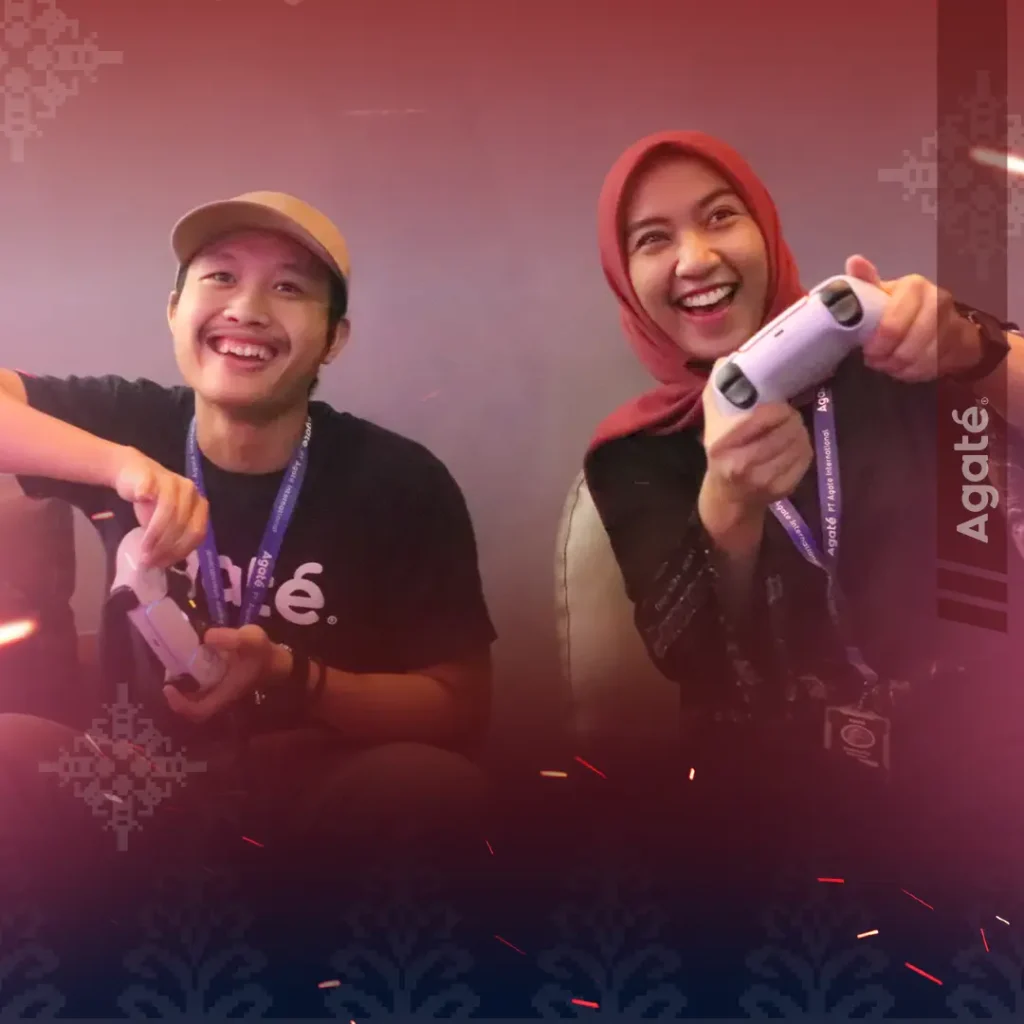
Video games have become a cultural and economic powerhouse, outpacing both the music and film industries in revenue. This financial dominance significantly impacts economic growth. For example, the gaming industry in the United States employs over 100,000 people directly in game development and an additional 300,000 in supporting roles. This sector contributes approximately $65 billion annually to the U.S. economy. Southeast Asia is a thriving gaming market, with Indonesia as its dominant force, accounting for 43% of the region’s gamers. In 2020 alone, Indonesia’s gaming industry generated USD 1.74 billion in revenue, equivalent to IDR 25 trillion. Recognizing the gaming industry’s immense potential, the Indonesian government issued Presidential Decree No. 19 of 2024 to accelerate its growth. This decree highlight the government’s aim to boost the national gaming industry’s contribution further, as the domestic gaming industry currently represents only a small fraction of the market, with foreign companies dominating over 99% of the share. Additionally, the industry’s contribution to the national economy remains low, accounting for approximately 2.19% of Indonesia’s GDP in 2020. The Indonesian Game Association (AGI), founded in 2013, is a key player in supporting the growth of the local gaming industry. Comprising prominent Indonesian game studios, AGI focuses on elevating the reputation of domestically produced games and fostering a thriving, inclusive gaming environment. Currently led by Cipto Adiguno, who also serves as Agate’s Chief Strategic Officer, AGI plays a vital role in driving the industry forward. AGI established Indonesian Game Day, or “HARGAI,” in 2016. Originally intended as a general platform for game promotion, the event has evolved into a celebration of accomplishments by Indonesian game developers. Gaming’s Cultural Impact Beyond economic influence, the gaming industry has emerged as a potent force in shaping popular culture. Games have become more than just entertainment; they are storytelling mediums that resonate deeply with audiences. Through immersive narratives and relatable characters, games have the power to influence social attitudes, inspire creativity, and even drive social change. This cultural impact has solidified gaming’s position as a dominant force in the entertainment landscape. Games Developed by Agate Moreover, games can become platforms for social commentary and activism. By addressing relevant social issues and empowering players to make meaningful choices, games can foster empathy, promote critical thinking, and inspire positive change. As technology continues to advance, the potential for games to drive social impact will only grow stronger. More Than Just Entertainment The interactive nature of games has transformed them into powerful tools for education and training, extending their traditional role as entertainment. Businesses are increasingly recognizing the potential of gamification to enhance employee engagement, productivity, and skill development. By incorporating game-like elements such as points, badges, leaderboards, and challenges into workplace activities, companies can foster a more dynamic and rewarding learning environment. Gamification can be applied to a wide range of business functions, from sales and customer service to product development and human resources. For instance, Agate integrated gamified elements into its onboarding process, making it more engaging and effective for new employees. Beyond the corporate world, gamification is proving to be a valuable tool for public education and social impact. By leveraging the inherent fun and motivation of games, educators and policymakers can address complex challenges such as financial literacy, health and wellness, and environmental sustainability. The collaboration between Bank Jago and Level Up powered by Agate, which resulted in the creation of Jago Money Quest, is a prime example of how gamification can be used to make learning accessible and enjoyable for a wider audience. This innovative approach to financial education can capture the attention of young people, equipping them with essential money management skills. Jago Money Quest Gameplay We Are Agate Founded in 2009, Agate has been actively evolving Indonesia’s gaming industry. Our commitment extends beyond creating high-quality games; we aim to cultivate a new generation of gaming talent. Through Agate Academy, we’re actively shaping the future of game development education, collaborating with the Indonesian Ministry of Education and Culture to integrate game development into the curriculum. Our programs, including Agate Game Course, Unreal Class, and Agate Game Course for Teacher, empower students and educators to create world-class talent. To expand our global footprint and foster strategic partnerships, Agate has established a presence in the United States, Canada, and South Korea. Our team, boasting AAA game development experience, is dedicated to positioning Agate as a leading global game development partner. Agate Representatives Recognizing the profound impact games have on people’s lives, we offer a comprehensive suite of services through our full game development, porting, and 3D game art service. In addition, Level Up powered by Agate empowers us to create games that not only entertain but also educate and train. Contact us today, and let’s collaborate to craft groundbreaking games that enrich lives! Do you want to turn your ideas or existing IP into a fully developed video game with proper game testing? Look no further than Agate! Don’t hesitate to get in touch with us today and learn more about how we can help you take your project to exceptional heights.
Exploring the Potential of Mobile Games

Mobile games have huge market potential, accounting for nearly half (49%) of all global game revenue in 2023, according to Newzoo. This statistic begs the question: what makes mobile games such a dominant force, and how can we capitalize on this opportunity? Mobile Phones’ Roles in Society and Technological Advancement Smartphones have undergone a remarkable transformation, evolving from simple communication devices into indispensable companions. They now offer many functionalities that seamlessly integrate into our daily activities. More than just making calls and sending texts, smartphones can capture precious moments with high-quality cameras, stay connected through video calls, and access a world of information and entertainment. Games, in particular, have found a thriving home on mobile platforms, offering a quick escape or a chance to connect with friends during commutes, breaks, or even while waiting in line. Recognizing this shift, smartphone manufacturers have adopted a tiered approach, catering to diverse economic classes. This approach encourages everyone, regardless of budget, to have access to a device that meets their needs. Interestingly, the rapid pace of technological advancement doesn’t necessarily render older technology obsolete. Features introduced in high-end smartphones today often trickle down to mid-tier or lower models within a few years. This “democratization” of technology ensures that a wider range of users can benefit from the latest advancements, even if they don’t own the most expensive device on the market. Impact on game development The breakneck pace of technological advancement presents both opportunities and challenges for mobile game developers. On the one hand, it opens doors for creating increasingly high-quality games with stunning visuals and immersive experiences. However, this progress also creates a “technology gap” between the capabilities of high-end and lower-end smartphones. Developers must grapple with the question: how can they create compelling games that cater to a diverse range of devices with varying processing power? Recent attempts to port AAA titles (high-budget, high-end games) to iOS platforms showcase the potential of high-performance chipsets. However, these ports haven’t achieved the expected sales figures. This suggests that gamers might not be entirely convinced by the mobile AAA experience, especially considering the rising popularity of powerful handheld consoles specifically designed for gaming. Here, developers need to carefully consider the unique value proposition of mobile games and tailor their creations to excel in that space rather than simply trying to replicate the AAA console experience on a smaller screen. Popular Genres Mobile gaming offers a unique platform where specific genres excel due to the platform’s strengths. These genres are said to be popular amongst mobile game players: Action Games: Fast-paced action games with simple controls are a perfect fit for mobile. Short bursts of intense gameplay are ideal for on-the-go sessions, while intuitive touch controls allow for easy pick-up-and-play action. Hyper Casual Games: These bite-sized experiences with straightforward mechanics and instant gratification are ideal for mobile short play sessions. They’re highly replayable and often encourage quick decision-making, making them perfect for short commutes or waiting times. Puzzle Games: The puzzle genre thrives on mobile due to its accessibility. Puzzle mechanics can be easily translated to touchscreens, offering players a mentally stimulating challenge that can be enjoyed in short bursts or longer sessions. Business Model The success of mobile games hinges on a well-defined business model. There are two popular approaches: Freemium with MicrotransactionsThis model offers the base game for free, enticing players with a taste of the experience. However, additional content like new characters, weapons, or cosmetic upgrades can be purchased through microtransactions. This allows for a wider reach while generating revenue from dedicated players. Ad-Supported GamesIn this model, the game is free to download and play. However, to cover development costs, developers integrate advertisements that appear periodically throughout gameplay. This model requires careful balancing to ensure the ads don’t disrupt the player’s enjoyment. Agate’s Experience in Making Mobile Games With over 15 years of experience crafting engaging games, Agate has become a trusted game developer in the mobile game industry. We’ve honed our skills across diverse genres, successfully developing titles that have garnered immense popularity in Indonesia and Southeast Asia. One such success story is “Memories,” our original intellectual property (IP) that has been downloaded over a million times. Additionally, we are currently developing Atma: Battle of Souls, a collaborative project with ISKRA. It is a supernatural techno-thriller RPG that immerses players in a world where advanced technology meets ancient traditions. To learn more about the game, please wait for its Beta test, which will open soon. This experience extends beyond development. We leverage our knowledge to offer comprehensive game porting services, ensuring your game seamlessly reaches players on various popular platforms, including Android and iOS. Don’t hesitate to get in touch with us today and learn more about how we can help you take your project to exceptional heights. Do you want to turn your ideas or existing IP into a fully developed video game with proper game testing? Look no further than Agate! Don’t hesitate to get in touch with us today and learn more about how we can help you take your project to exceptional heights.
Why Does Game Testing Matter?

Have you ever been battling a final boss, and suddenly, your character falls through the floor? Or have you tried to decipher a confusing menu system that makes you feel like throwing your controller across the room? These are the kinds of issues where game testing becomes crucial. But what exactly is game testing, and why is it so important? Game testing is the process of meticulously evaluating a video game to identify and eliminate bugs, glitches, and other issues that could hinder a player’s experience. Thorough game testing is crucial for everyone involved. Here’s how: Building a Strong Reputation A bug-free game is not just about player satisfaction; it’s also a testament to a developer’s commitment to quality. A strong reputation built on delivering exceptional games attracts players, investors, and partners, paving the way for future success. Balanced Gameplay Game testings can uncover balancing issues, ensuring that no weapon, character, or strategy is overpowered, leading to a smoother and more enjoyable gameplay experience. Great Investments A well-tested game ensures player satisfaction, the key ingredient for a successful game launch. Happy players translate to positive reviews and strong revenue streams. Beyond Bugs: What Testers Look For Motivation and Usability Testing Testers assess the user interface (UI)’s intuitiveness, ease of learning the controls, and clarity of the game’s instructions. They ensure a smooth and frustration-free gameplay experience. Story and Dialogue In some cases, testers might also provide feedback on the game’s narrative flow, dialogue quality, and overall pacing. They identify inconsistencies, plot holes, or awkward phrasing that might affect the player’s immersion. Level Design and Balance Testers play through levels to assess difficulty, fairness, and overall flow. They ensure the game offers a satisfying challenge without feeling frustrating or overwhelming. Game Testing Phases Game testing typically goes through several phases, each with a distinct purpose: Alpha Testing Alpha testing occurs after the game’s core mechanics and features are taking shape but before it’s feature-complete. Players identify bugs that disrupt gameplay flow, pinpoint balance issues between different mechanics or features, and ensure everything works cohesively. The game visuals might still have placeholders, and overall polish might be lacking. Beta Testing Beta testing is the final major hurdle before a game’s release. In Beta testing, players test the game in a near-final state, uncovering bugs that might arise due to the wider variety of player hardware and playstyles. Beta testers also provide invaluable feedback on overall game balance, enjoyment factor, and the user interface’s intuitiveness. The game at this stage should be feature-complete, visually polished, and relatively stable. Beta testing helps ensure a smooth launch experience for the general public. Pre-Alpha Testing In some cases, the developer team might do pre-alpha testing. Pre-alpha testing is the earliest stage of testing in video game development, happening even before alpha testing. It’s essentially the point where the game is barely recognizable as the final product. Here’s what pre-alpha testing is all about: Focus on core mechanics The main goal is to identify and fix critical issues with the core gameplay loop, like movement feeling unnatural or combat not functioning properly. Rapid iteration At this stage, things can change quickly. Mechanics might be tossed entirely or reworked based on testing results. Internal testing Primarily done by the development team itself. Programmers, designers, and QA testers might be involved in hammering out the foundation of the game. On some occasions, pre-alpha testing might become public, even though it’s not typical. Here’s a few reasons why: Community Building and Hype Generation Sometimes, developers strategically leak pre-alpha footage or allow a limited number of fans to participate in testing to build hype and excitement for the game early on. This can be a great way to generate buzz and get fans invested in the project. Feedback Gathering from a Wider Audience While internal testing is valuable, pre-alpha testing with a wider audience can expose developers to a more diverse range of player experiences and preferences. This can be particularly useful for online games where a large and varied player base is expected. Transparency and Early Collaboration Some developers choose transparency and involve the community early on in the development process. This allows for early feedback on core mechanics and design choices, potentially shaping the game in a way that resonates more with the target audience. Pre-Alpha Testing in RIFTSTORM RIFTSTORM is a game from Confiction Labs with Agate as the co-developer. This year, it has carried out 2 public pre-alpha tests. Overwhelmingly Positive Response The response to both pre-alpha tests was overwhelmingly positive. Over 5,000 players participated in the first test. Players dedicated an average of 1 hour and 39 minutes, but some players spent more than 50 hours in the intended 3-hour playtime for the pre-alpha build, demonstrating their deep engagement. The global reach was impressive, with players hailing from across the globe, with the top 7 countries including the US, Indonesia, Brazil, Russia, France, and Poland. Participation soared in the second pre-alpha test, reaching over 22,000 players and over 672,000 unique visitors who explored the game on Steam. A dedicated group of 165 players exceeded the intended 5-hour playtime, logging over 15 hours each. Players collectively poured in a staggering 22,032 hours of playtime, showcasing their enthusiasm for the game. The global reach expanded further, with players from a remarkable 110 unique countries participating. These pre-alpha tests provided valuable insights to the RIFTSTORM development team. Based on player feedback, the team meticulously balanced and adjusted buffs within the game. The positive reception for new character introductions during the tests demonstrates the effectiveness of public pre-alpha testing in shaping the game’s content. By involving the community early on, RIFTSTORM is well-positioned for a successful launch, offering a polished and engaging experience that players worldwide will enjoy. Game Development Process in Agate As a company that has been around for 15 years, Agate continues to improve its game development processes to be able to complete projects on time. In general, the game development process at Agate is carried
Story from Unreal Fest Gold Coast 2024
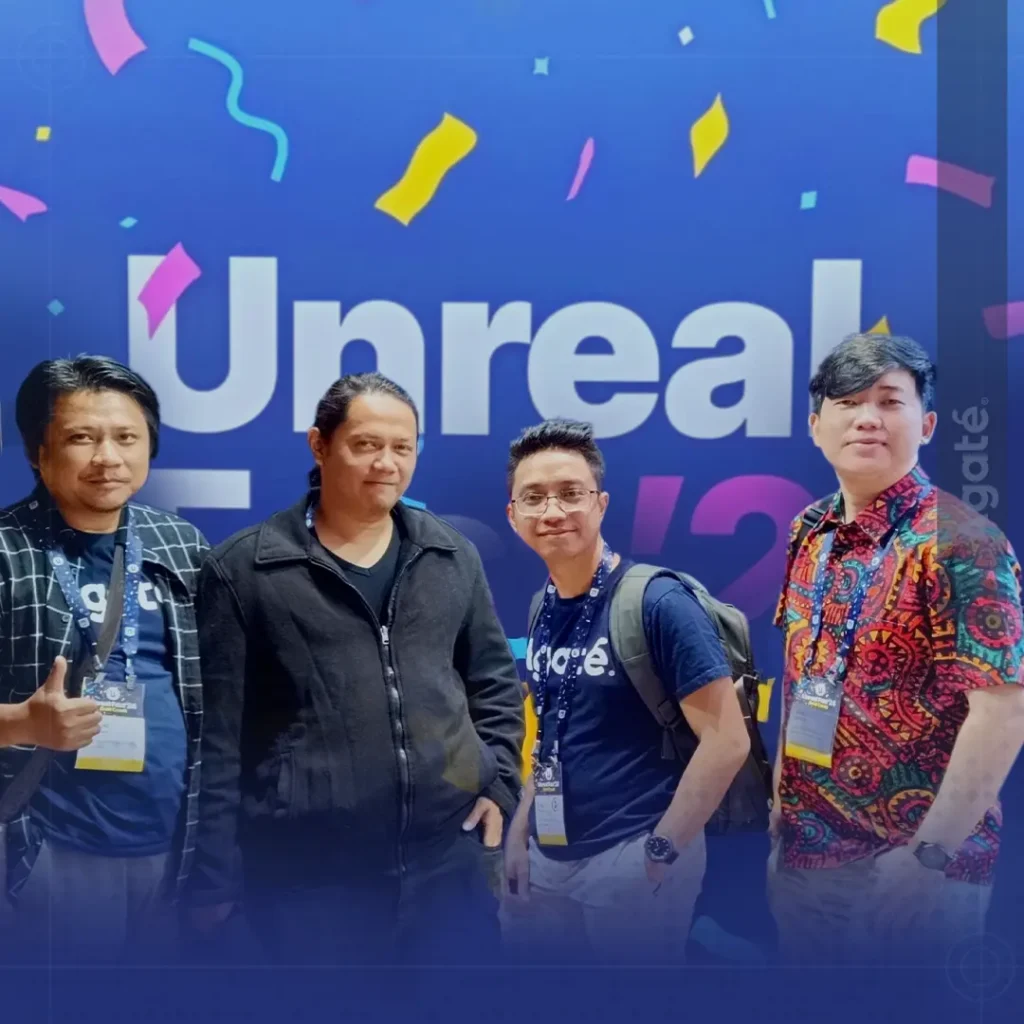
Agate returned from a fruitful trip to Unreal Fest Gold Coast 2024 in Australia. Hosted by Epic Games, this event provided valuable opportunities to learn from veteran developers and connect with the Australian game development scene, inspiring us to always improve our skills. The event offered various seminars led by Unreal Engine specialists and selected studio developers. These talks covered various aspects, from core functionalities to advanced techniques. Learning from the Australian Gaming Landscape The trip also provided insights into the Australian game development scene. While both Indonesia and Australia share similarities in their development landscape, the Australian industry possesses a clear advantage in terms of international connections. This is likely due to factors like shared language and a robust economic environment. We also observed that Australian developers, even small indie studios, displayed a high level of proficiency with the engine. This stands in contrast to Indonesia, where many developers haven’t yet fully embraced the potential of Unreal Engine or similar development tools. Community: A Key Ingredient for Success Our crew’s discussions with Epic Games representatives highlighted community as a cornerstone of a successful game development landscape. Here’s why a strong development community matters: Shared Knowledge and Expertise Game development is a complex field. A strong community provides a platform for developers to learn from each other, share best practices, and troubleshoot challenges. This collective knowledge base accelerates innovation and growth. Collaboration Opportunities Community fosters collaboration between studios. Studios can work together on projects, share resources, and even attract new talent. This collaborative spirit can lead to the creation of groundbreaking games. Motivation and Inspiration Being part of a thriving community provides developers with a sense of belonging and support. Seeing the success of other studios can be a powerful motivator and source of inspiration. A Commitment to Excellence Fueled by the inspiring Australian game development scene, Unreal Fest served as a powerful reminder of the importance of continuous learning, harnessing the full potential of Unreal Engine, and strong development communities. This commitment to excellence is reflected in our crew, achieving the prestigious Unreal Authorized Instructor. This certification signifies a deep understanding of Unreal Engine, which is still uncommon amongst Indonesian game developers. With this expertise, we push the boundaries of what’s possible and craft exceptional games for a global audience. Ready to take your IP to a new level? As one of Indonesia’s most experienced game companies, Agate offers a team of professional writers, designers, and developers who can help you create exceptional games across all game platforms. From concept development to execution, we’ll work with you to bring your vision to life. Don’t hesitate to contact us today to learn more about how we can help you take your project to exceptional heights!

